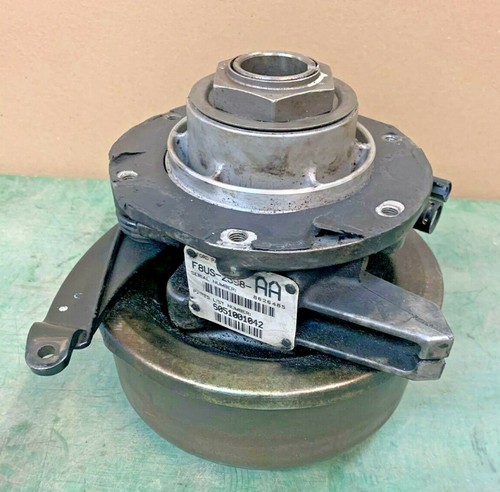I'm not one who was supportive of the manufacturers using the DIH brake on this weight class of vehicle. They can be made to hold. We did it in tests, and of course, it
had to pass the FMVSS 105 Hill hold parking section in both directions at GVW. NHTSA does its tests at TRC in Ohio, and we did testing there too.
We never ran the E-Vans except in the aftermarket service brakes, so they probably are some differences. But the first thing I would do is pull he rotors and adjust the shoes.
The shoe lining is critical, and the adjustment of the shoes is critical. That being said, I was always skeptical of long-term service life. The FMVSS requirement is for new vehicle production. But there is a lot that happens during the longer term. Some shoe wear from lightly contacting the inner drum, heat aging of the shoe linings (the drum is a little bake oven), and rusting of the drum itself. The drum rubbing surface is critical, and if you look at brand-new OE rear rotors, you can see they are shot-peened. I've never found any aftermarket drums with the same finish (image attached).
Like with the normal disc service brake, the leverage of the contact radius (drum radius) is critical in relation to the diameter of the tires. With the stock application, to me, it's uncomfortable. If your Quigley has tires with a larger rolling radius than stock, it puts more leverage against the parking brake. And with a Quigley conversion, things get dicey about who is responsible for meeting FMVSS 105, despite if whether the weight is within the chassis GVW.
Anyway, the magic number is no more than 0.015" difference between the linings at the center diameter and the diameter of the drum. So that is a 0.0075" clearance per shoe. And it is a pain in the tail to get right. We had a large set of outer micrometers and vernier calipers to get the setting right. If your mechanic uses one of the older service drum gauges, putting some stock on the measuring fingers can get it to the correct clearance. Those were usually set for 0.030 to 0.035" clearance. And I would put a smidgen of anti-seize on the backing plate platforms that the shoes ride on. From the assembly line, there is a like product there.
And not only is the clerance need to be correct, but so does the grind of the shoes, which is something the aftermarket never seems to get correct. However, that's not to say the aftermaerket canno use a high friction material and not worry about abrading the drum surface finish away. I just don't know of one.
I'll throw in some images I have and some slides from a presentation I did to our sales engineers in Ann Arbor, who would interface with the Ford people daily. Our new corporate management (we were acquired), who had never worked on brakes, wanted us to get the F-150 DIH lining business; they had no idea what they were doing. That progress to the Superduty. We never did, it would be too expensive for us, or maybe I should say, too expensive for Ford. Nisshinbo had that market cornered.
There is another direction you could take. Ford used a driveshaft parking brake on the ambulances and some buses. It requires an assembly for the specific transmission model, and the driveshaft would need to be replaced. It typically is around $1000 for the brake assembly only when you can find them. From my point of view, it was a better approach. Just don't lose a U-Joint. While the drum radius is not that much different than one DIH parking brake, it has the mechanical advantage of the ring and pinion.
The data is for an F-150.
![]()
![]()
![]()
Thermal exposure effects; Explorer
![]()
Thermal exposure F-150; 200mi Surburban traffic.
![]()
Superduty F-350 DIH lining
![]()
Supeduty F-350 GVW lining surface degradation post-emergency stops from 25mph (it's a soft, lining for compliancy to the drum for 20% grade hill-hold). The experimental lining is black, but its the smearing in the center that's a concern.
![]()
Drum surface of OE rear rotors.
![]()
Find many great new & used options and get the best deals for Ford Drive Shaft Parking Brake E350 E450 F450 F550 4R100 Trans F8US-2598-AA at the best online prices at eBay! Free shipping for many products!
www.ebay.com
![]()
![]()
















